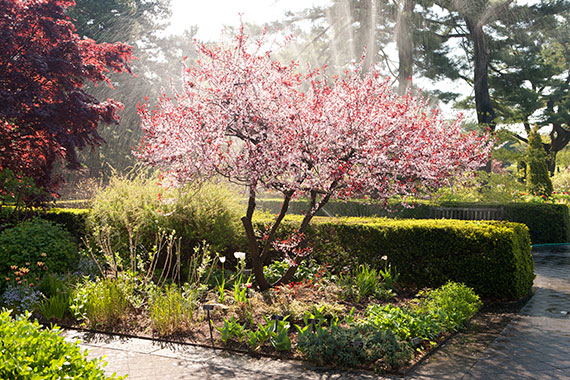Here Comes The Sun Science Club: Sunny Thoughts from an NYBG Botanist
Posted in Interesting Plant Stories on May 12, 2015 by Stevenson Swanson
Stevenson Swanson is the Garden’s Science Media Manager.

What does the sun do? That question was posed recently by Science Friday, the incomparable science news program that airs on public radio stations nationwide. To kick off its latest Science Club education activity, the program asked a number of scientists and solar experts for their thoughts about why the sun matters.
As you might imagine, how you think about the sun depends largely on what you do. Ernest Moniz, the U. S. Secretary of Energy, talked about the sun as a source of energy. A psychiatrist talked about the sun’s influence on our mood.
What about a botanist? The program asked Barbara A. Ambrose, Ph.D., who is Cullman Associate Curator for Plant Genomics at The New York Botanical Garden, to ponder the role of the sun in the world of plants. Here’s her thought-provoking answer:
What does the sun do?
The sun provides energy. Plants transform the sun’s energy into stored chemical energy during photosynthesis. This is an amazing process in which plants take carbon dioxide, water, and the sun’s photons and produce carbohydrates and oxygen. These carbohydrates are the stored chemical energy that allows plants to grow and develop into the food we eat and the flowers we enjoy. Plants have evolved for hundreds of millions of years to harness the energy of the sun efficiently and effectively, something we humans have yet to perfect. What’s really cool is that a byproduct of this reaction is oxygen–the air we need to breathe.
You can read the responses of other experts, as well as hear Dr. Ambrose read her explanation, at the Science Friday site here. You can also share your own thoughts on that page’s comments section or in our comments box.
And if you talk about this with your friends, just remember: the oxygen you’re using to speak came from a sunbeam striking a leaf.

